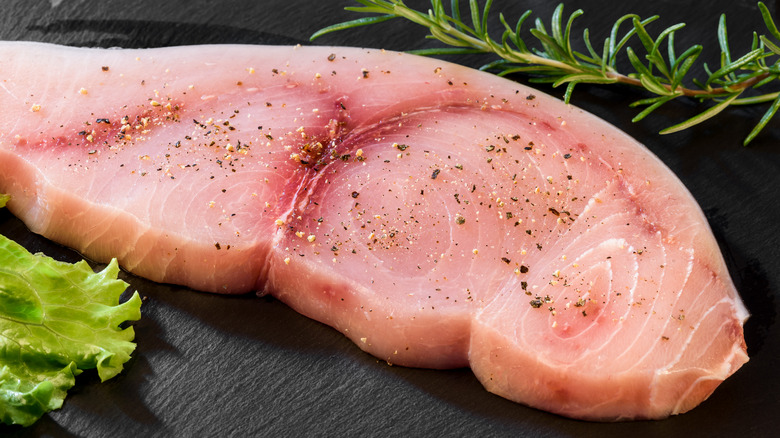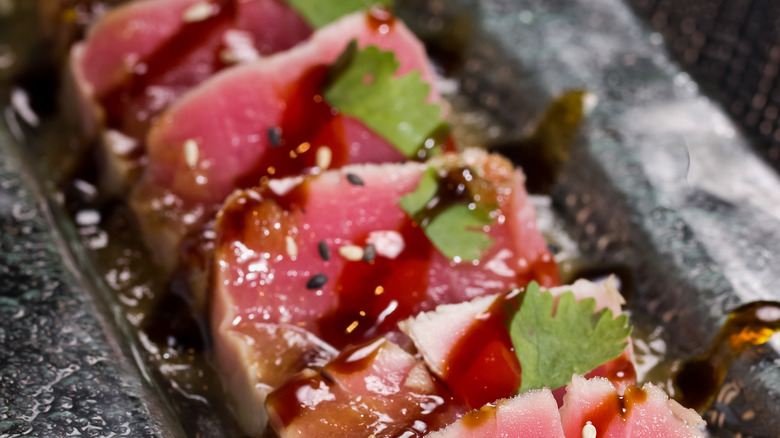Is The Dark Strip On Tuna And Swordfish Safe To Eat?
Swordfish and tuna produce very similar types of fish steaks. Obviously, they are both delicious and can come in very large portions, but there's another key similarity between the two. Namely, both of these fish have a distinct dark strip across their fibers. This intimidatingly dark-red strip in the middle of a tuna or swordfish steak doesn't seem particularly appetizing.
Some may even assume it's not safe to eat. In truth, it's actually perfectly safe to consume, albeit stronger in that fishy flavor than the rest of the steak. The strip is packed with myoglobin, which is the pigment responsible for giving red meat its reddish hue. Just cook the steak as normal without any worries. That said, there's no harm in cutting it out either if you don't like the flavor.
When cutting out the bloodline, you want to be careful not to cut more than the actual bloodline itself. That way, you won't be losing out on delicious swordfish or tuna meat in the process. Be careful with your cut and trim off as much as you can without touching too much of the main meat. All that being said, the bloodline isn't inedible. In fact, with the right preparation, it can be downright delicious.
The tuna and swordfish bloodline can be a delicious dish
In her MasterClass, Chef Niki Nakayama has this to say about the bloodline's place on the menu. According to the chef, she worked at restaurants where they would prepare the bloodline for consumption by soaking it in water for a few days. She said, "We would marinate it and grill it, and it would be probably one of the most delicious things that you've ever had."
Likewise, chefs like Davin Waite and Nick Sakagami believe that throwing away the bloodline is wasting one of the best parts of the fish (via Fishful Future). For instance, the bloodline can be used in Japanese-style yakitori (skewered fish). Waite said, "This dish may seem strange to the American palate, but it has been around in one form or another since humans started eating fish."
As part of the fish, the bloodline contains all the nutrients that come with tuna and swordfish such as Omega-3 fatty acids, vitamin B-12, vitamin D, and selenium. After all, it's still tuna and swordfish meat, just with a lot more myoglobin on it. Regardless of your stance on the bloodline in fish, there's no denying how creative chefs can be even with the "unwanted" parts of food. While the bloodline may taste fishy for some, there's nothing fishy about the ways it's been innovated.

